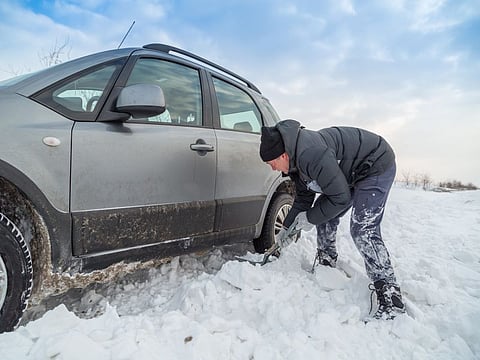SATURDAY, Feb. 1, 2020 (HealthDay News) -- Almost everyone gets stuck shoveling snow at some point during the winter. To prevent back pain and strain, one spinal expert has some advice.
Orthopedic surgeon Dr. Srinivasu Kusuma, from the University of Chicago Medicine Medical Group, noted it's all in the precautions you take before you tackle your snow-covered driveway.
- Decide if it's safe to shovel. If you already have back issues and don't exercise often, or if you are prone to lightheadedness or shortness of breath, maybe you shouldn't be shoveling. Instead, consider using a snowblower. For those with heart problems or chest pains during exercise, Kusuma urges they check with their doctor about shoveling.
- Warm up your muscles. "Make sure to warm up before you shovel, just as you would before a workout," Kusuma said in a university news release. Stretching and strolling can warm up your muscles. If you're going to shovel bright and early, make sure your muscles are loose before shoveling. Don't have time to stretch out in the a.m.? You might want to shovel in the evening then.
- Appropriate winter gear is important. A coat, pants, hat and gloves will keep you warm in frigid weather. Wearing waterproof boots can also give you traction and prevent slips and falls, Kusuma said. Use a lightweight shovel with an adjustable handle.
- Use proper technique. Push the snow to the side instead of picking it up. If you need to lift the snow, don't fill the shovel more than halfway. "Bend with your knees and not your back, using your powerful leg muscles instead of core muscles," Kusuma said. Always keep your shoulders and hips square with the shovel and avoid twisting at the waist.
- Take your time. "People are usually in a rush to get to work or to get out the door," Kusuma said. "I see injuries like strains, sprains and herniated disks when people try to do too much too fast." Stretch your arms and legs every 10 to 15 minutes to stay limber. "You're less likely to [get] hurt if you plan ahead and take breaks so your muscles stay flexible," he noted.
More information
The American Academy of Orthopaedic Surgeons has more on safe shoveling.


